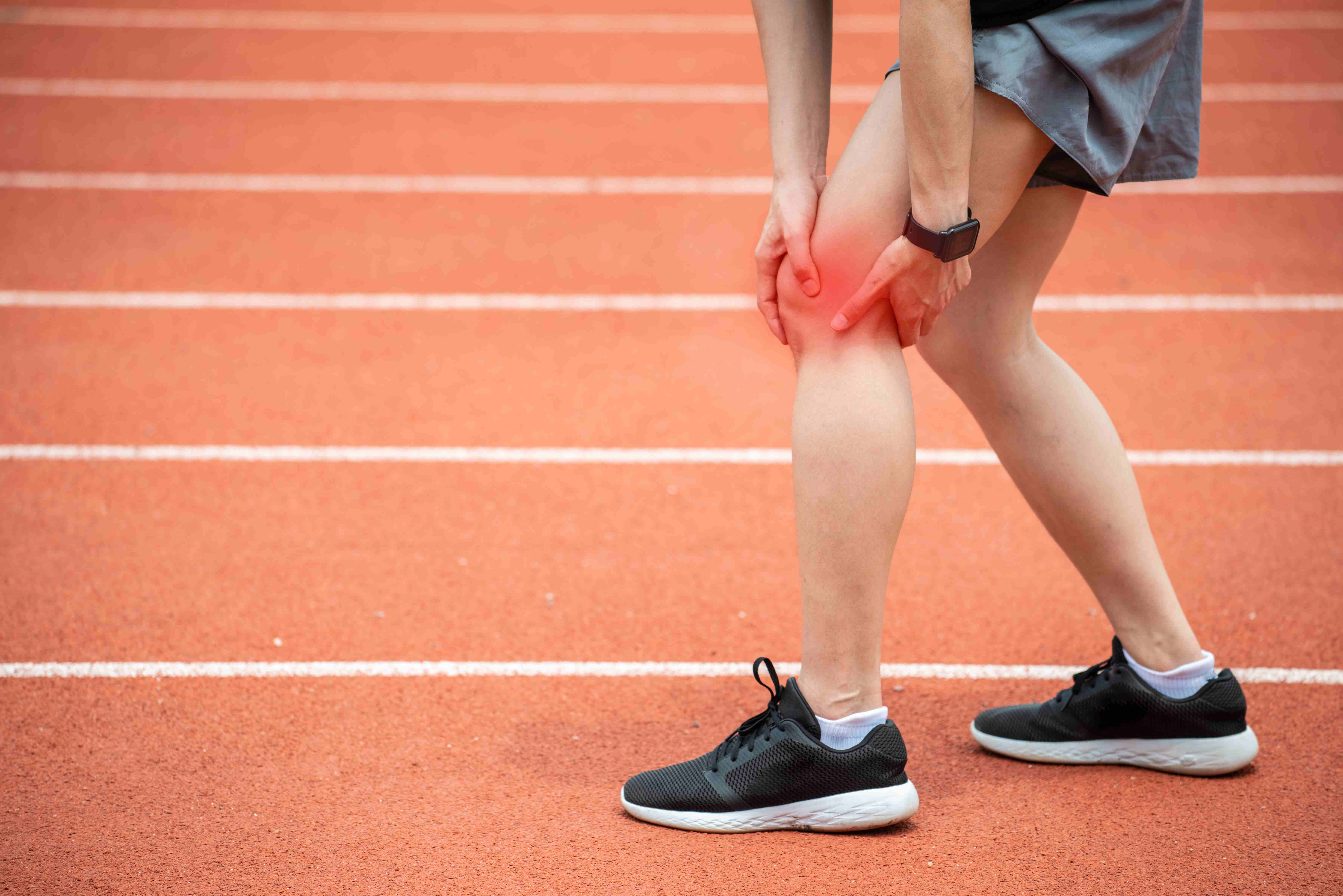Iliotibial Band Syndrome (Itbs): Causes, Symptoms & Treatment
Written By: Dr. Mohamed Ghanem
Updated On:January 27, 2025

What is Iliotibial Band Syndrome (Itbs)?
Iliotibial band syndrome occurs when the tendon in your leg that rubs against your hip or knee bones becomes inflamed or irritated. The tendon runs from the top of your pelvic bone all the way down to your knee and is located on the outside of your leg. When it becomes excessively tight, your bones will chafe against it. Your iliotibial band may tighten for a variety of causes.
Tendons, which link your muscles to your bones, are elastic-like, flexible fibrous fibers. When you squeeze a muscle, your tendon pushes on the bone, which causes your bone to shift.
Iliotibial band syndrome can affect one or both legs. It can also affect both legs. Bilateral iliotibial band syndrome is what it's termed when you have ITBS in both legs.
Causes of Iliotibial Band Syndrome (Itbs)
When your iliotibial band is stretched too far and brushes against bone, it becomes irritable and inflamed. There are several potential reasons for a tight iliotibial band.
- Foot pronation: Your foot turns outward by nature. The iliotibial band extends and moves toward your bones as a result.
- Weak hip abductors: When your hip abducts, it turns away from your body. Your iliotibial band may tense if your hip rotation is compromised.
- Your tibia is also known as your shinbone. Internal tibial torsion. When your tibia is bent inside your body, it is said to be internally torn. Your iliotibial band is drawn nearer to your bones as a result.
- The knee joint experiences medial compartment arthritis, which can result in genu varum: When your feet hit your ankles in genu varum, your knees will expand. Your iliotibial band is pulled, tightening it.
- Iliotibial band tightness from birth: It's conceivable that you were just born with an iliotibial band that is tighter than average.
There are a number of reasons why your tight iliotibial band may scrape on your bones, including:
- A lack of sleep
- Excessive cooling down after exercise
- Exercising without sufficiently warming up beforehand
- Putting too much effort into your workout
- Running on an incline or a bend
- Worn-out footwear
Symptoms of Iliotibial Band Syndrome (Itbs)
A tight iliotibial band may manifest as a number of symptoms:
- Hip pain: Your greater trochanteric scrapes on your iliotibial band on a regular basis. The area of your femur where the bone spreads is called the greater trochanteric. Your tendon becomes inflamed from the contact, and your hip begins to hurt. There could be a snapping noise.
- Clicking sensations: On the outside of your knee, you can experience a snap, pop, or click.
- Knee pain: The lateral epicondyle is located on the outside of the knee, close to the widest part of the femur. When you flex and extend your knee, your tight iliotibial band repeatedly presses on your lateral epicondyle. Your tendon becomes inflamed from the contact, and your knee begins to hurt.
- Warmth and redness: The outside of your knee may be warm to the touch and seem discolored.
- The discomfort will first begin just after you exercise. You'll ultimately have symptoms while you're not exercising as the condition becomes worse.
When to see a doctor for Iliotibial Band Syndrome (Itbs)?
If you experience knee or hip discomfort that either doesn't go away after a few weeks or grows worse, get in touch with your doctor.
Iliotibial Band Syndrome (Itbs) Risk Factors
If you're young and you exercise regularly, you have a higher chance of developing iliotibial band syndrome. Athletes who play the following sports are more susceptible to Iliotibial Band Syndrome (Itbs):
- Basketball
- Cycling
- Hockey
- Running
- Skiing
- Soccer
There are several characteristics that offer you a slightly higher than usual likelihood of developing iliotibial band syndrome even if you are not an athlete. Among the causes are:
- Bowed legs
- Having a longer left leg than right
- Arthritic knees
- Rotation of your ankle, leg, or foot inward upon movement
- A lack of strength in your abdominal, butt, or hip muscles
Iliotibial Band Syndrome (Itbs) Complications
Patellofemoral pain syndrome (PFPS) may occasionally result from iliotibial band syndrome. Along with the discomfort in your knees and hips, you could also have pain around and beneath your kneecap (patella). If you experience any other symptoms, let your healthcare practitioner know right away.
Iliotibial Band Syndrome (Itbs) Diagnosis
Following a physical examination, discussion of your symptoms, and history of activity, your doctor may determine that you have iliotibial band syndrome.
A procedure known as the Noble and Ober test could be carried out by your medical professional. There are a number of steps, including:
- Check to check whether your lateral epicondyle, which is located on the outside of your knee, is the source of your iliotibial band syndrome discomfort.
- Keeping your knee supported, move your hip away from your body. Your hip could hurt and be limited in its range of motion.
- Check for discomfort by adjusting the angle at which you move your knee.
Imaging is also necessary for the accurate diagnosis of iliotibial band syndrome. If your doctor is unsure of your diagnosis, they may request an MRI (magnetic resonance imaging). Through the process of exclusion, the MRI should assist them rule out additional problems including a meniscal rupture or lateral collateral ligament (LCL) damage. An ultrasound can demonstrate your iliotibial band's motion during hip or knee flexion and extension, proving that you have iliotibial band syndrome.
Iliotibial Band Syndrome (Itbs) Treatment
Iliotibial band syndrome can be treated in several ways, some of which can be done at home and others of which need medical attention. Commonly used therapies include:
- Rest: Until your discomfort has subsided and your iliotibial band syndrome has healed, some professionals advise against exercising your injured leg. You should discuss how much rest and activity you should obtain with your healthcare professional.
- Medication: Narcotic painkillers Ibuprofen (Advil®, Motrin®), a kind of nonsteroidal anti-inflammatory medicine (NSAID), and naproxen (Aleve®) are a few examples. Have a discussion about proper doses with your healthcare professional.
- Manual treatment: You could learn how to massage your body with a foam roller from a physical therapist.
- Physical therapy can help you ease your hip and knee discomfort by teaching you stretches, strengthening exercises, and other methods. You might stretch your iliotibial band with the use of these procedures, which would ease the strain. You may learn the best ways to warm up before exercise and cool down after it from a physical therapist.
- Posture training: Your iliotibial band syndrome may be impacted by the way you hold your body when performing everyday tasks, participating in sports, or in other activities.
- Injections of corticosteroids may help to lessen iliotibial band irritation.
- Iliotibial band syndrome seldom requires surgery. If medicine and physical therapy don't help, your doctor could suggest it.
Iliotibial Band Syndrome (Itbs) Prevention
If you're an athlete like a skier, biker, or long-distance runner, it may be challenging to prevent iliotibial band syndrome. To lessen your risk of ITBS, you could consider altering some of the methods you carry out those tasks. Examples comprise:
- A hill or any incline should be avoided when running on it.
- Whatever you do, be sure you are using the proper approach.
- Increase training volume progressively. When cycling, gradually increase your pace rather than abruptly changing from slow to fast (or rapid to slow).
- Warm-up and cool down gradually.
- Put on supportive footwear.
References
Fairclough, J., Hayashi, K., Toumi, H., Lyons, K., Bydder, G., Phillips, N., ... & Benjamin, M. (2007). Is iliotibial band syndrome really a friction syndrome?. Journal of Science and Medicine in Sport, 10(2), 74-76.
Falvey, E. C., Clark, R. A., Franklyn‐Miller, A., Bryant, A. L., Briggs, C., & McCrory, P. R. (2010). Iliotibial band syndrome: an examination of the evidence behind a number of treatment options. Scandinavian journal of medicine & science in sports, 20(4), 580-587.
Pegrum, J., Self, A., & Hall, N. (2019). Iliotibial band syndrome. bmj, 364.
Strauss, E. J., Kim, S., Calcei, J. G., & Park, D. (2011). Iliotibial band syndrome: evaluation and management. JAAOS-Journal of the American Academy of Orthopaedic Surgeons, 19(12), 728-736.
Van der Worp, M. P., van der Horst, N., de Wijer, A., Backx, F. J., & Nijhuis-van der Sanden, M. W. (2012). Iliotibial band syndrome in runners: a systematic review. Sports medicine, 42, 969-992.
Meet our doctors from the Orthopaedics department





















































